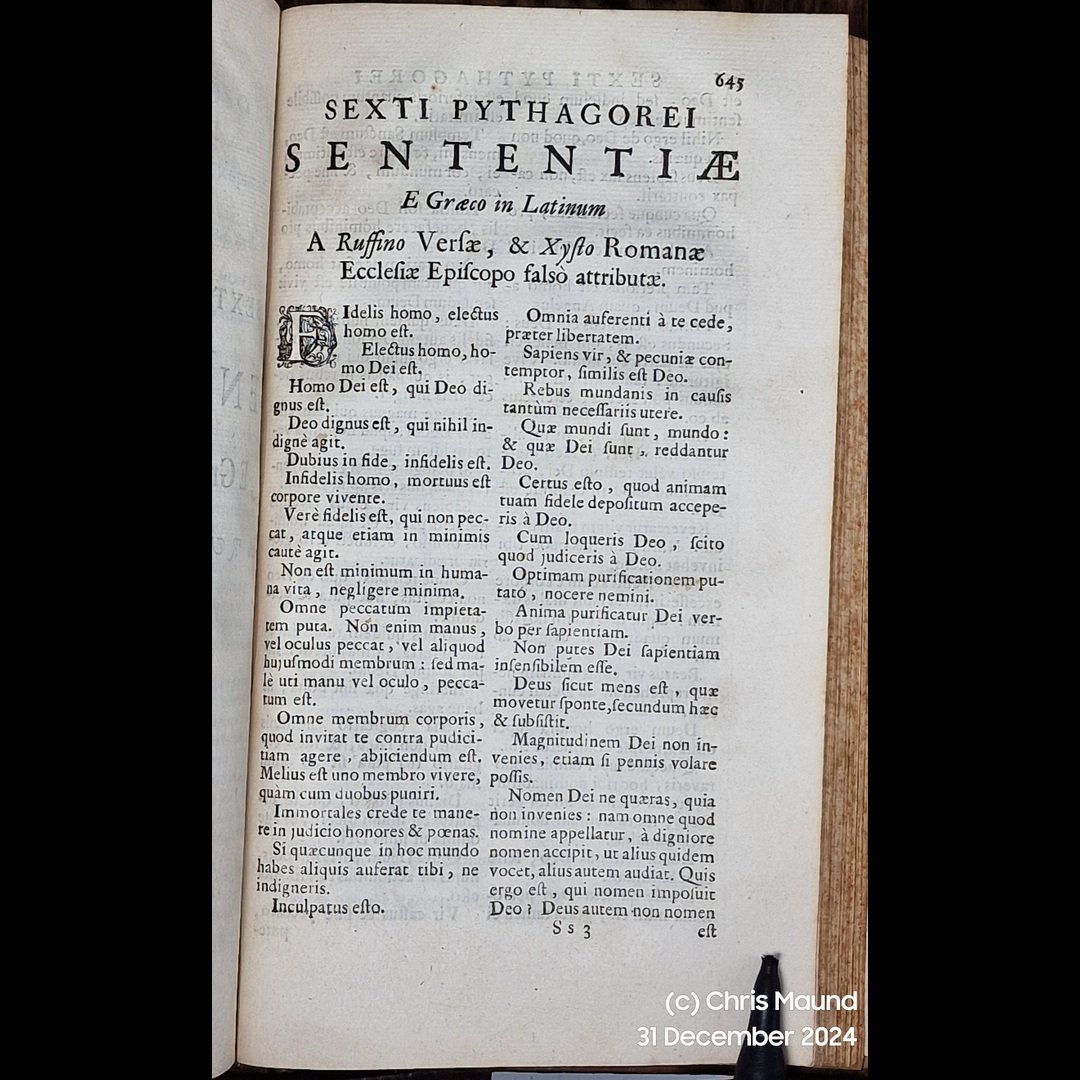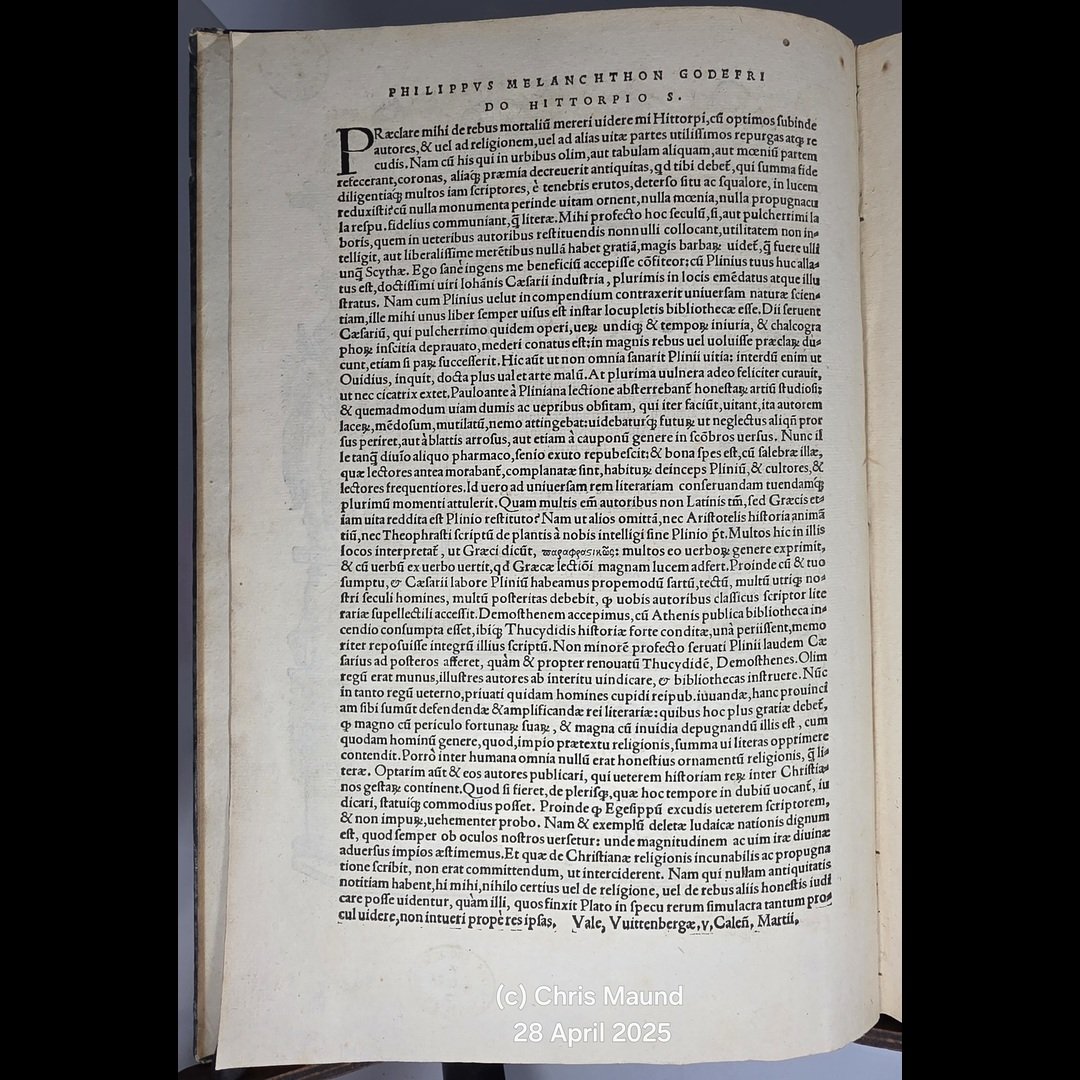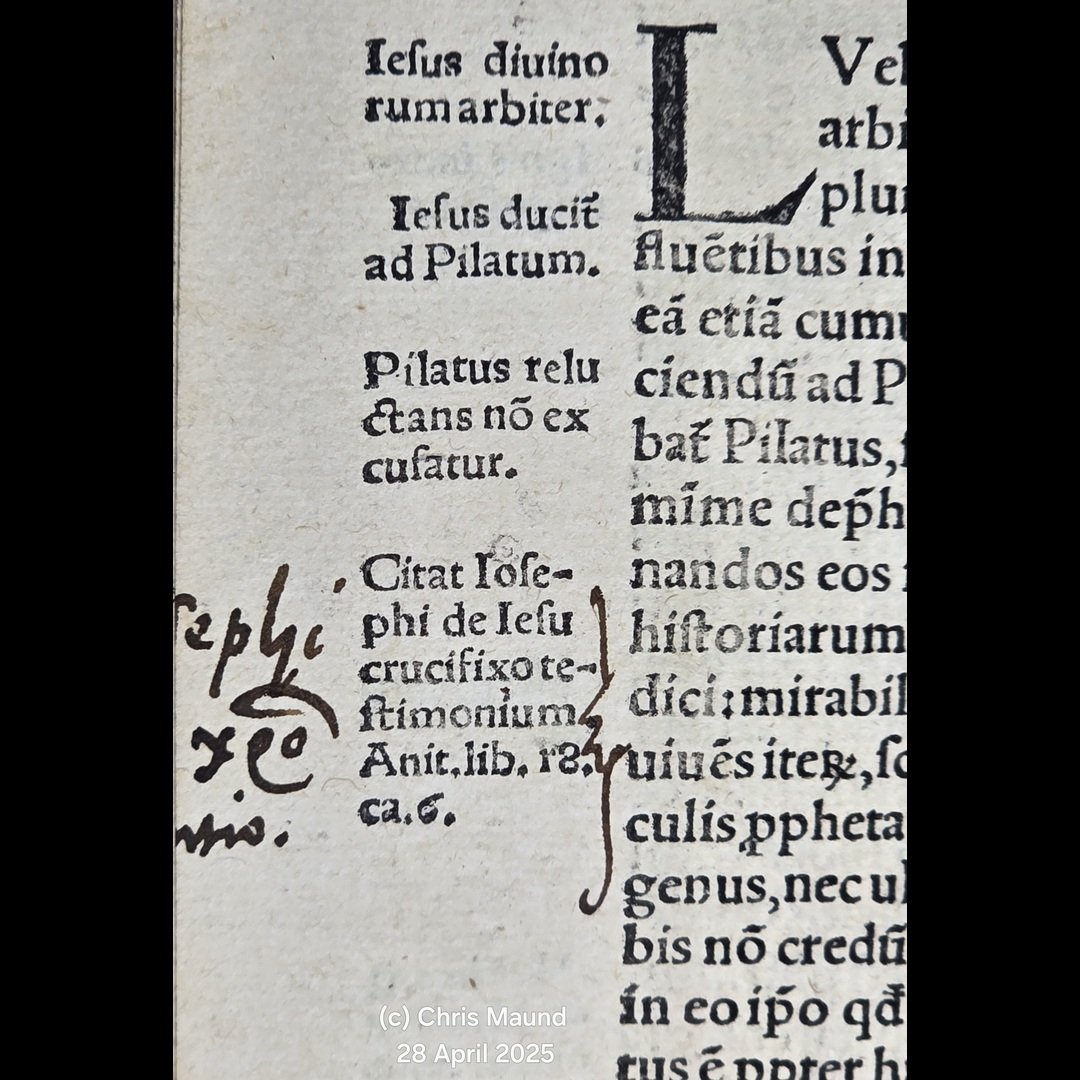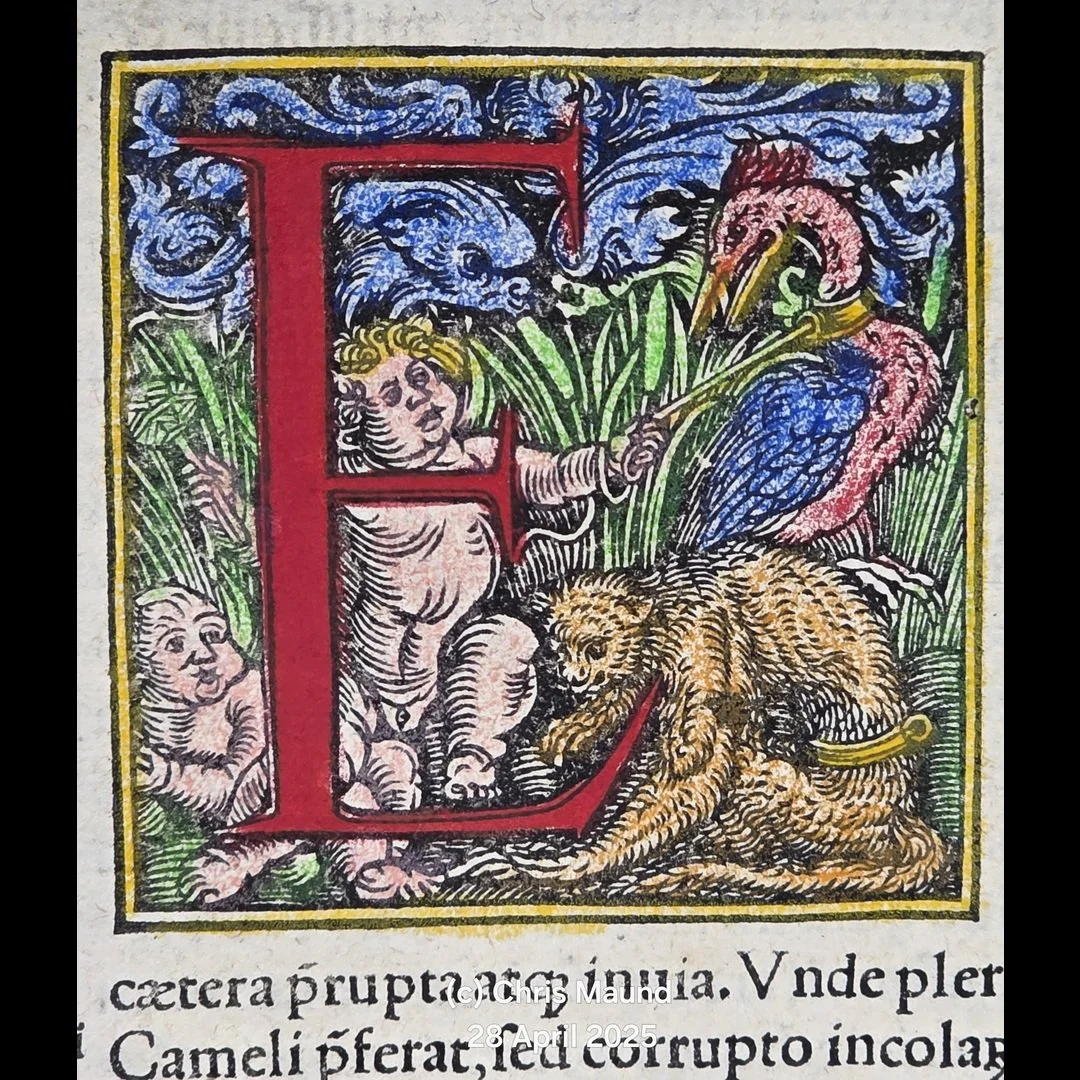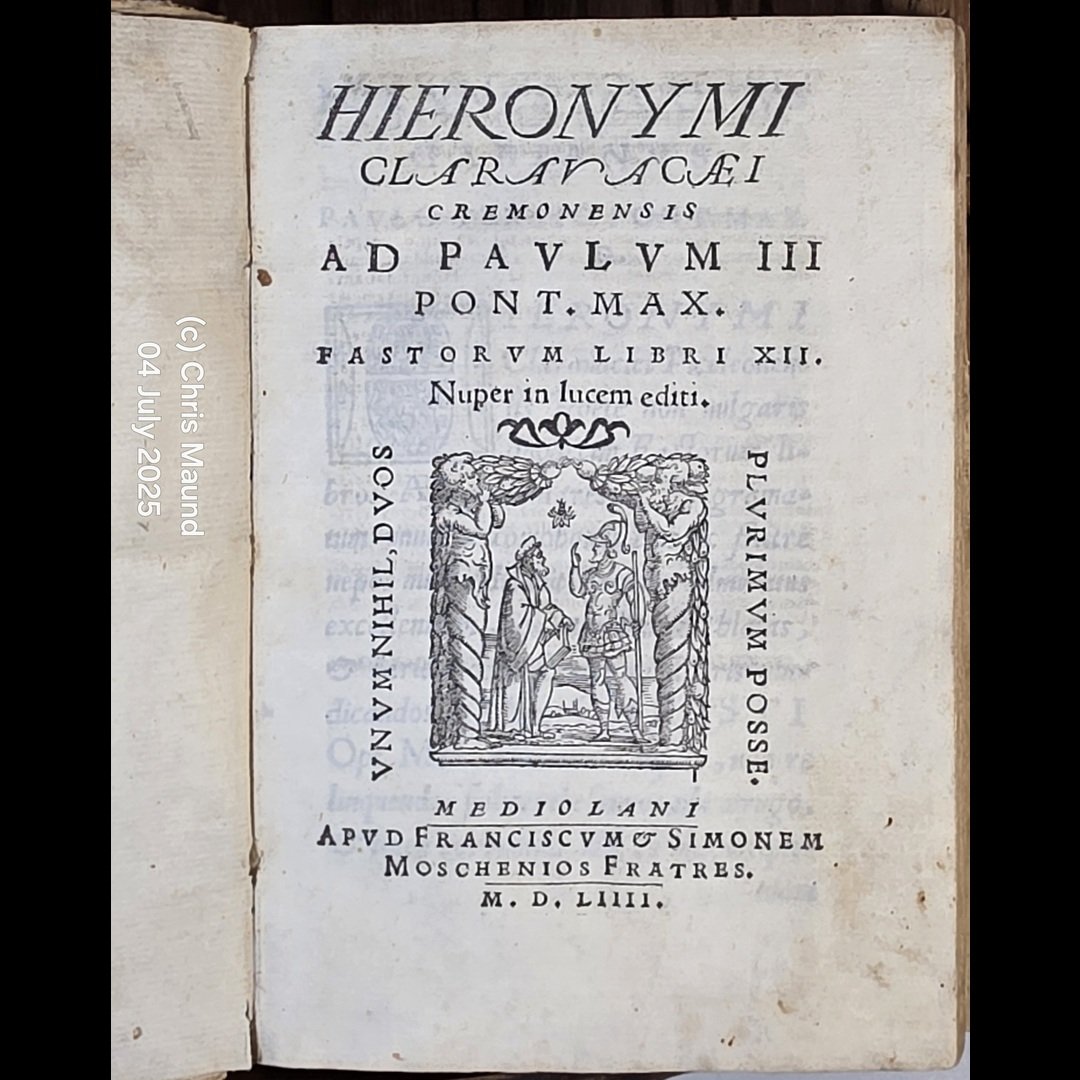 Image 1 of 19
Image 1 of 19

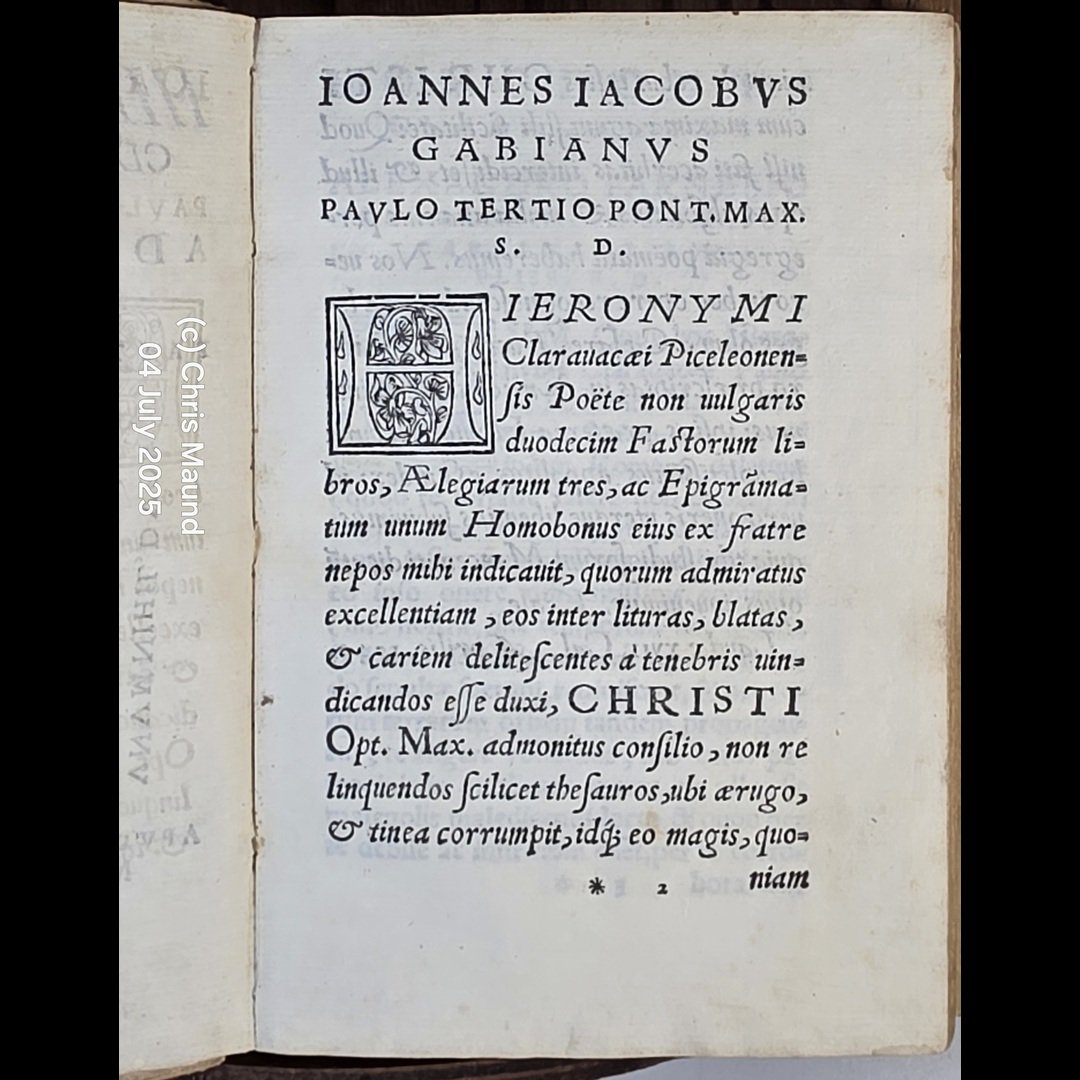 Image 2 of 19
Image 2 of 19

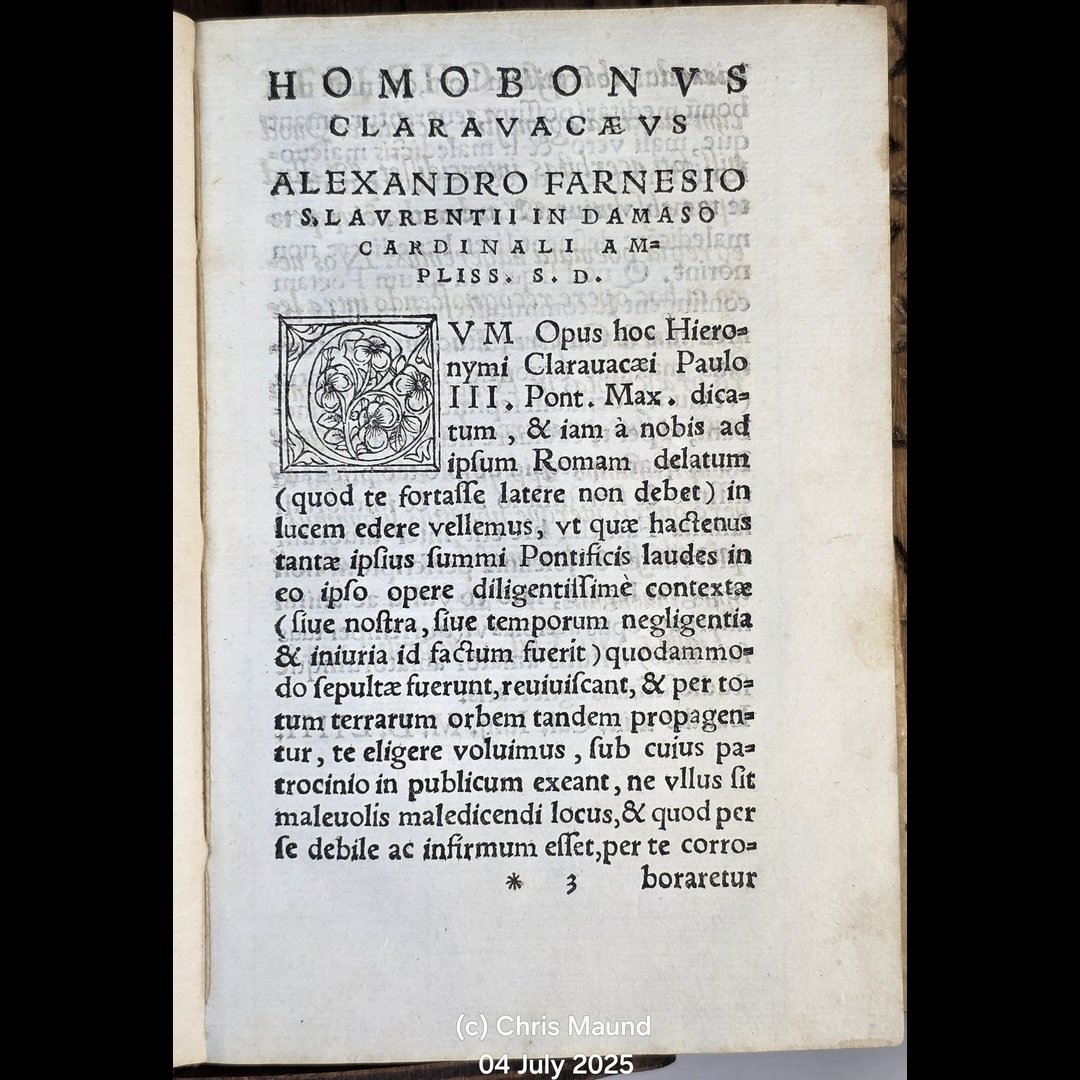 Image 3 of 19
Image 3 of 19

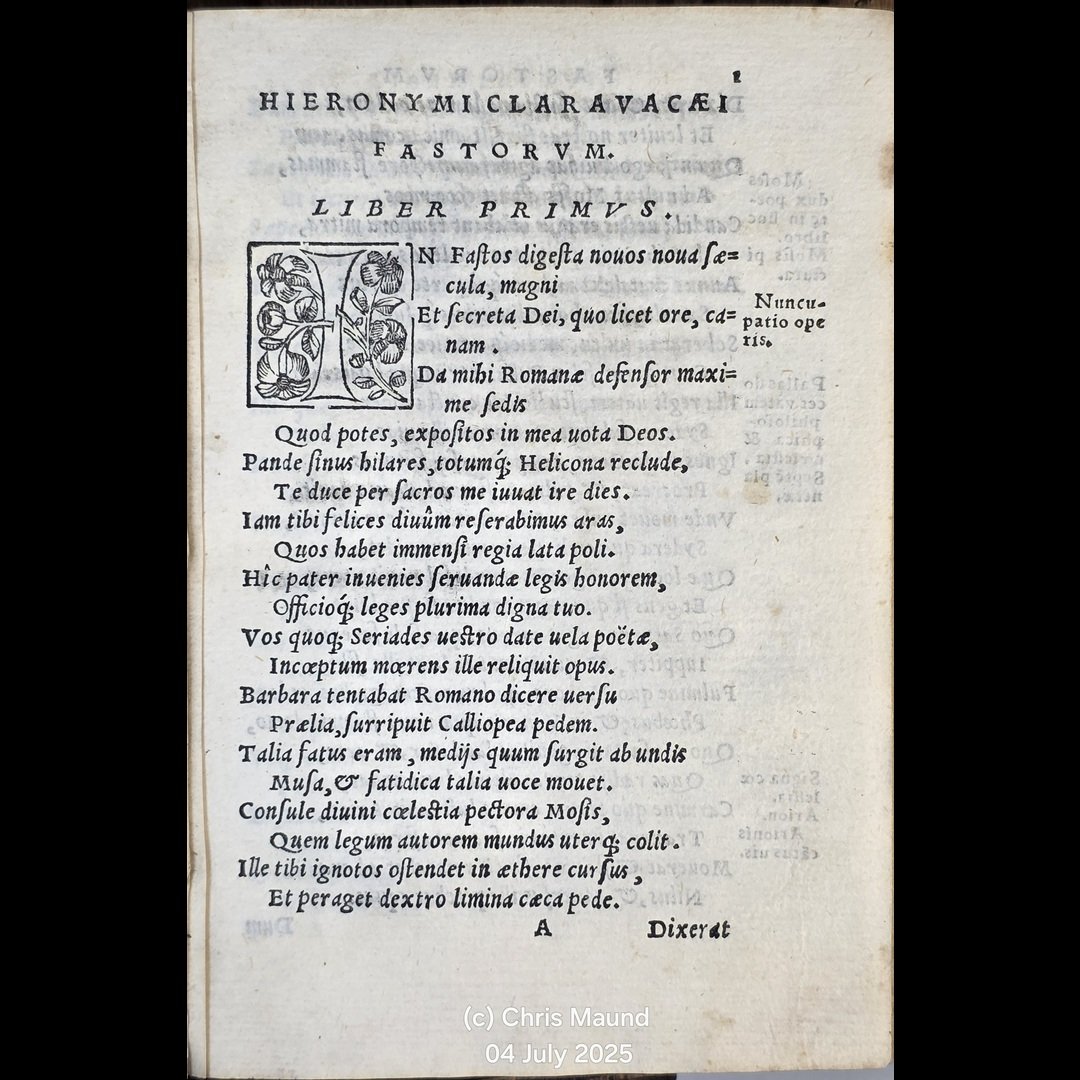 Image 4 of 19
Image 4 of 19

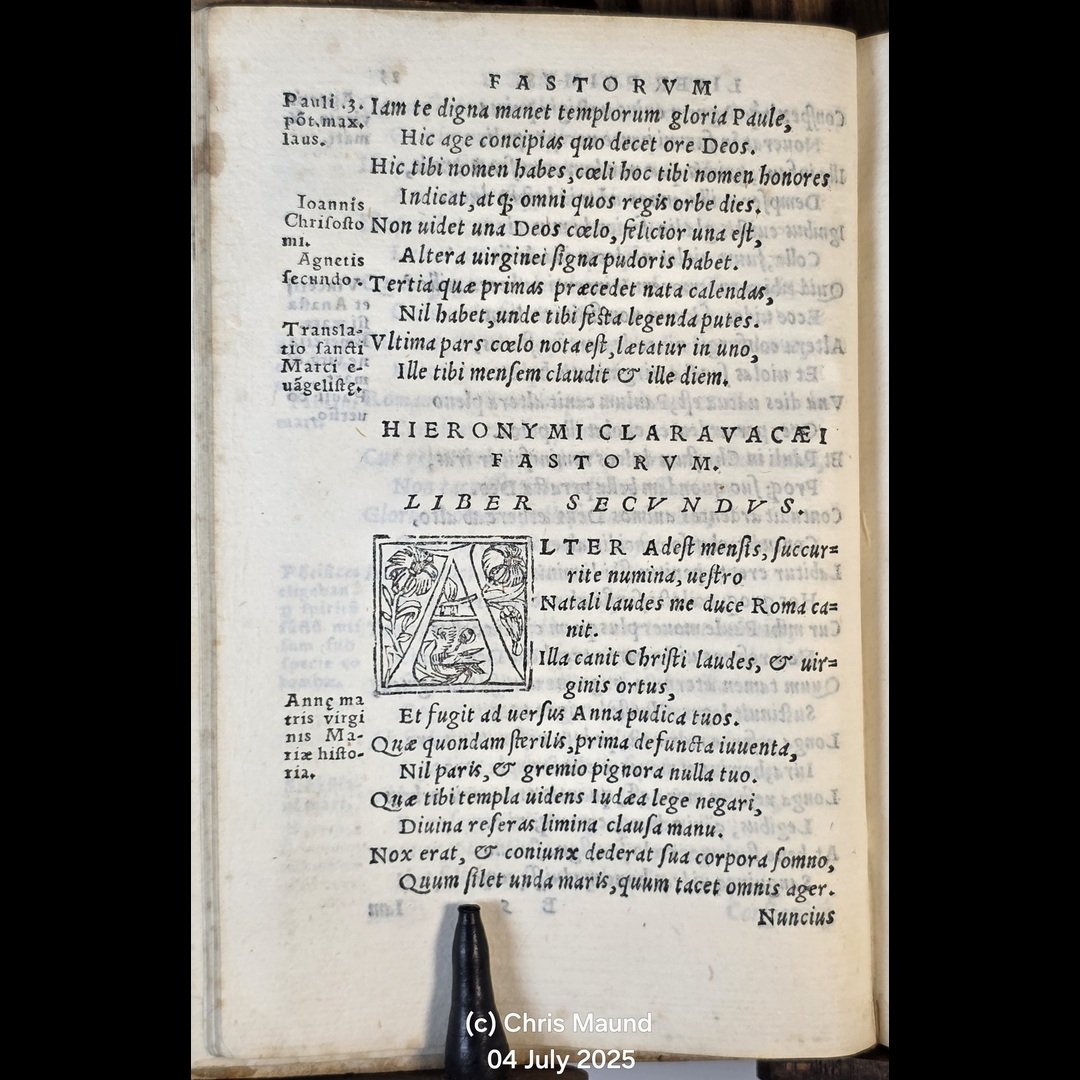 Image 5 of 19
Image 5 of 19

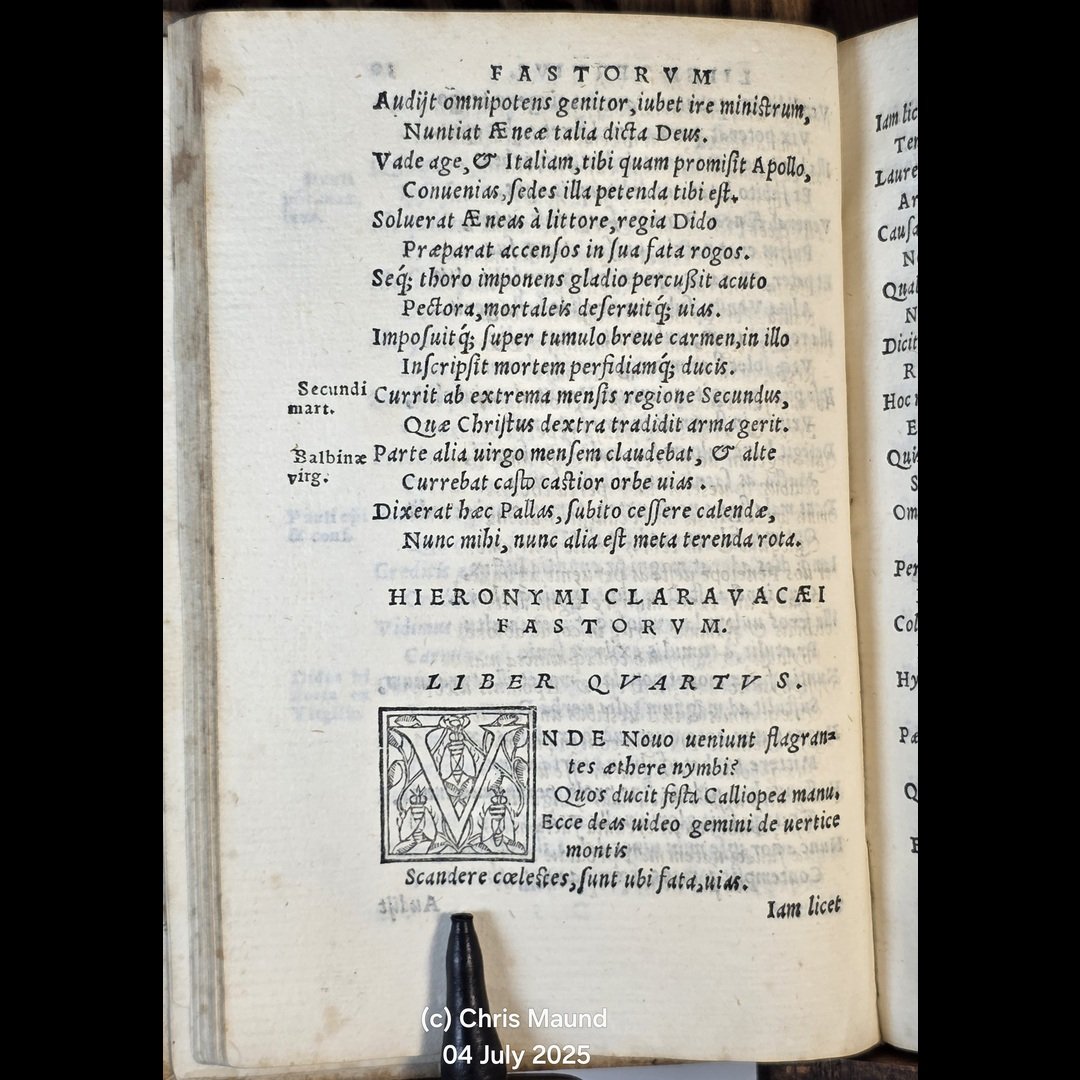 Image 6 of 19
Image 6 of 19

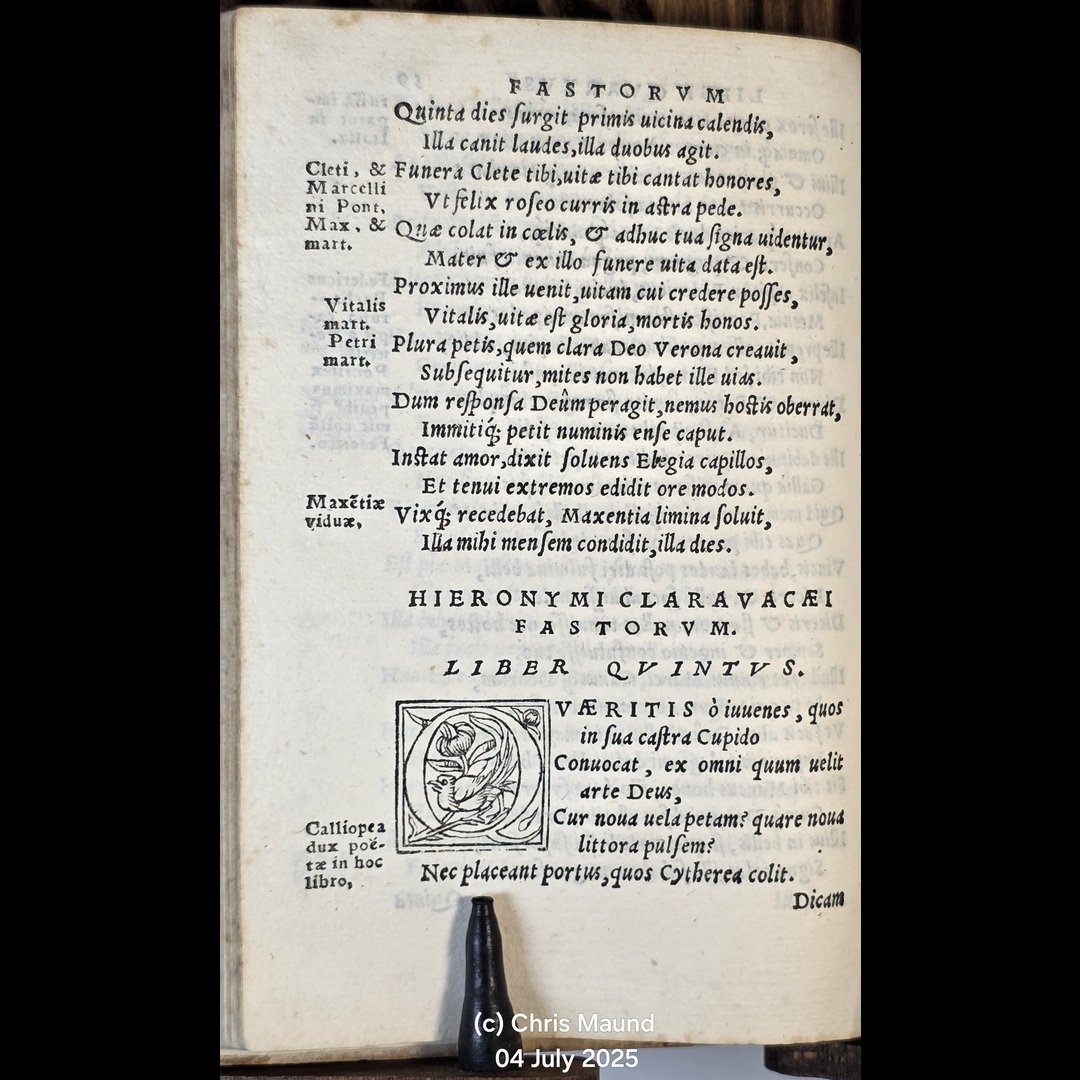 Image 7 of 19
Image 7 of 19

 Image 8 of 19
Image 8 of 19

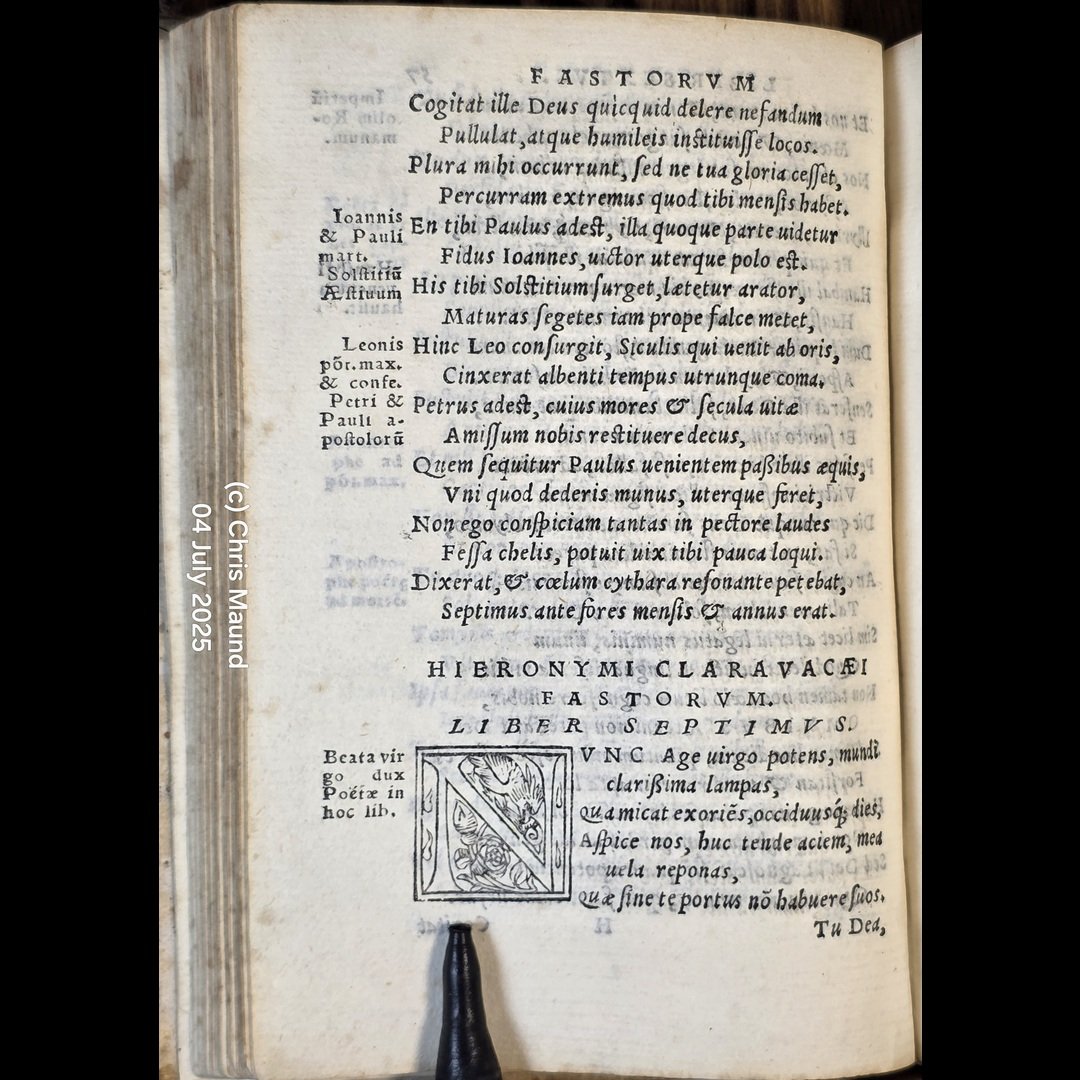 Image 9 of 19
Image 9 of 19

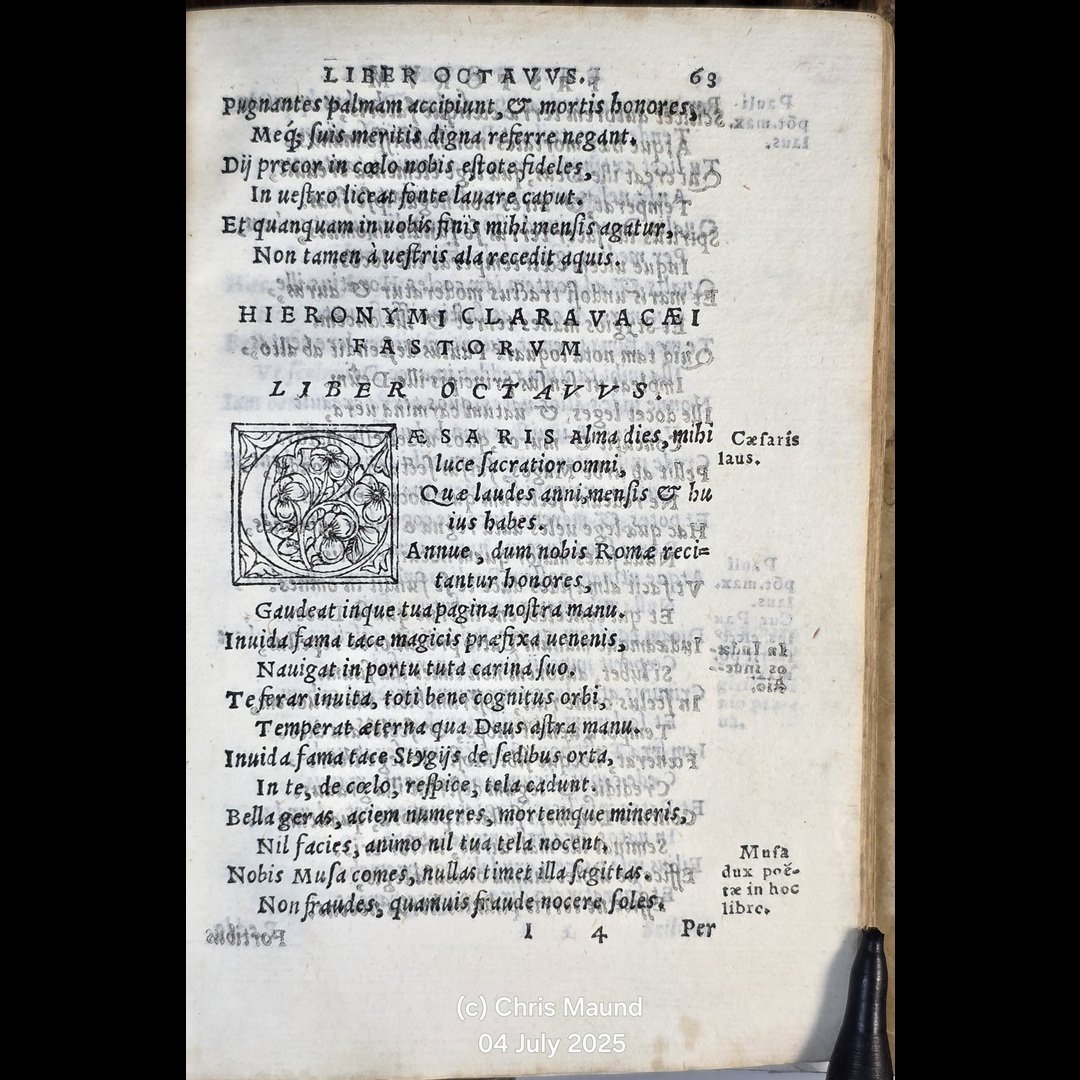 Image 10 of 19
Image 10 of 19

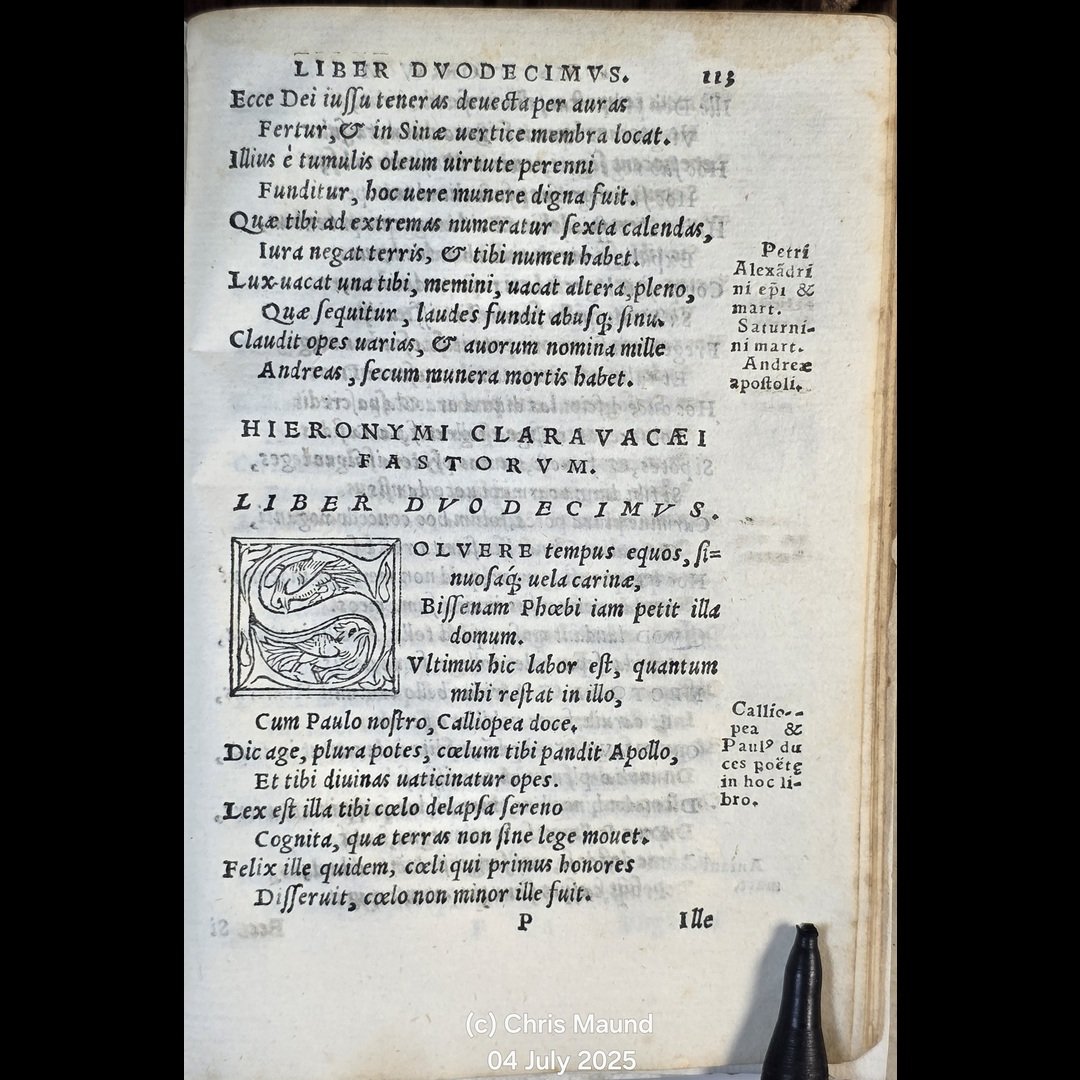 Image 11 of 19
Image 11 of 19

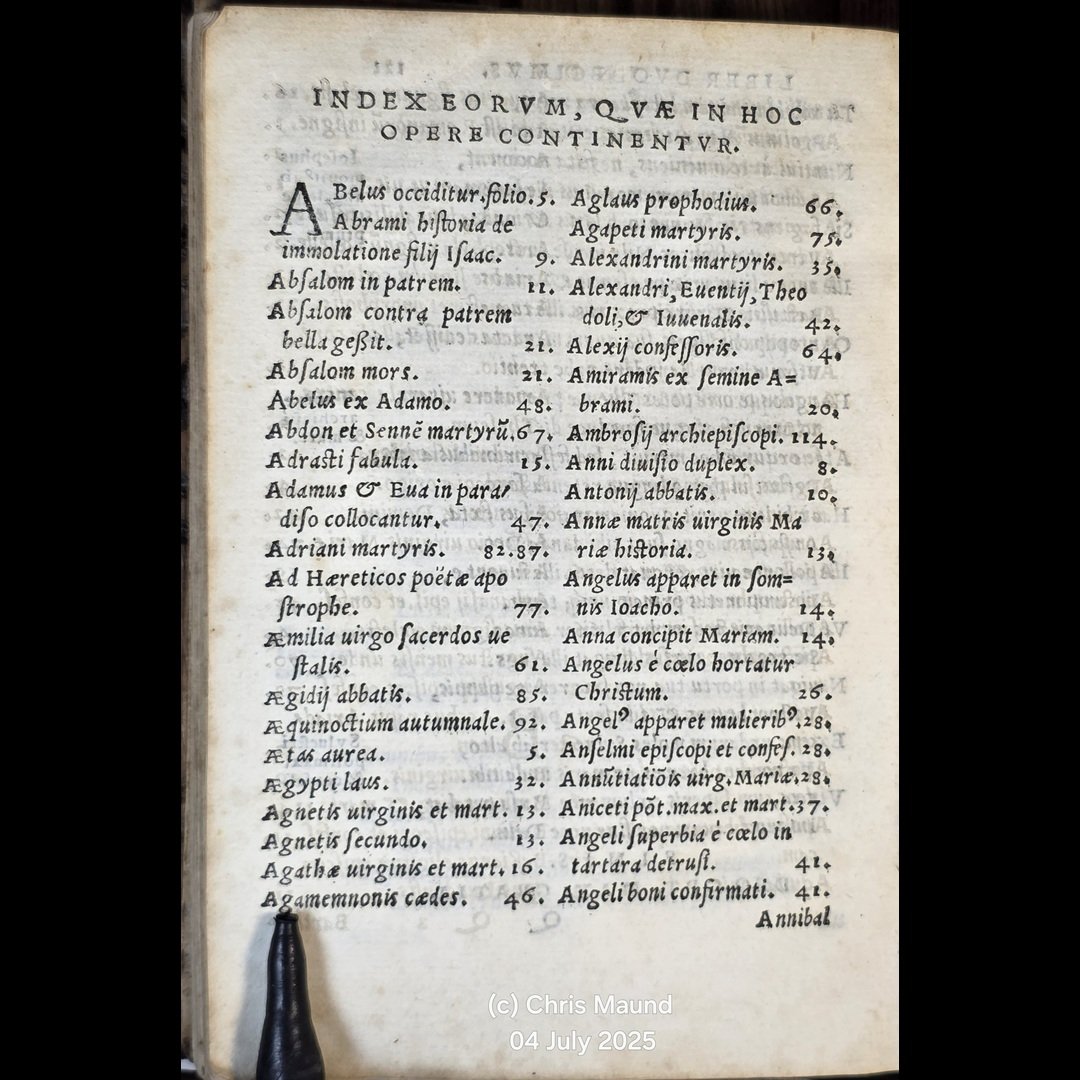 Image 12 of 19
Image 12 of 19

 Image 13 of 19
Image 13 of 19

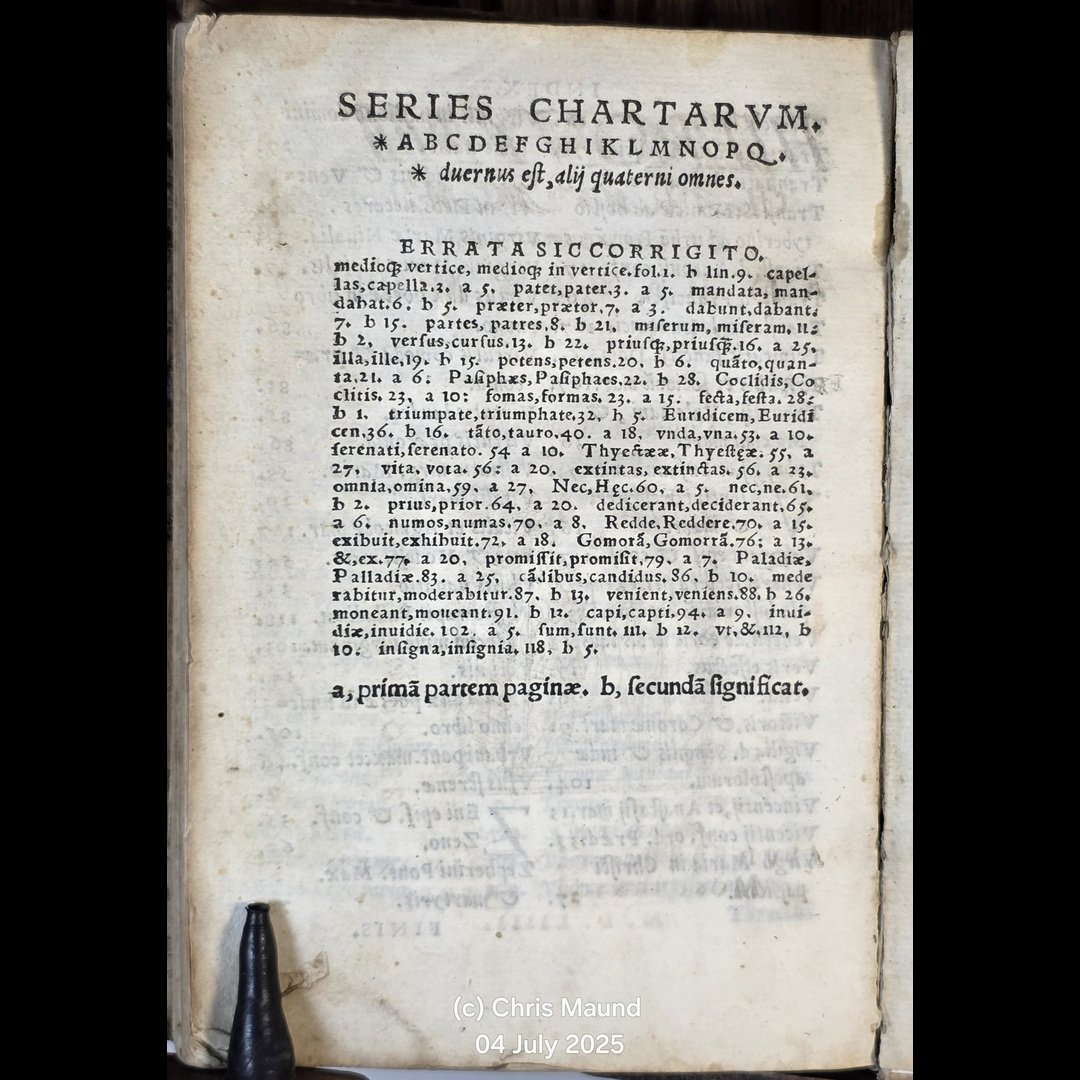 Image 14 of 19
Image 14 of 19

 Image 15 of 19
Image 15 of 19

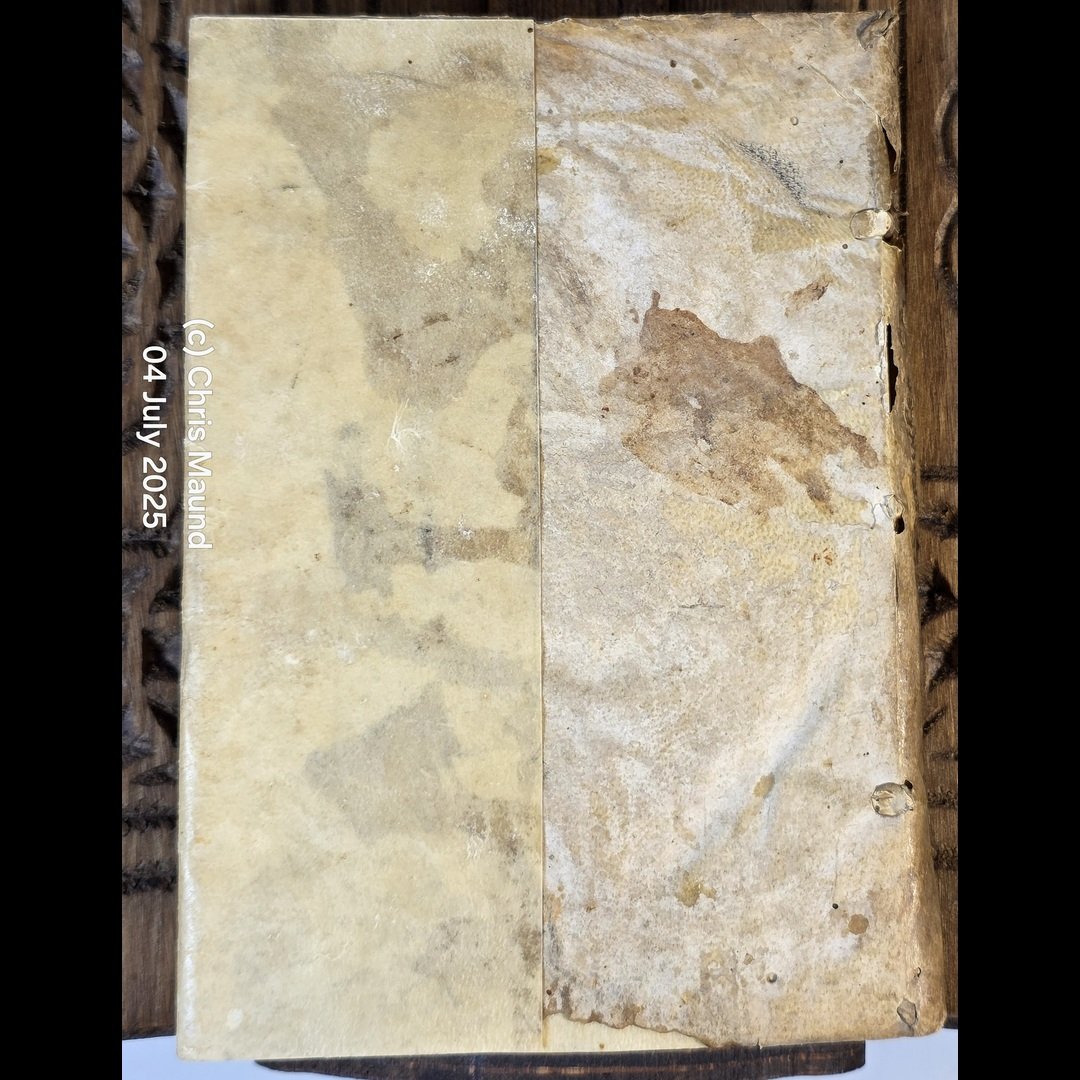 Image 16 of 19
Image 16 of 19

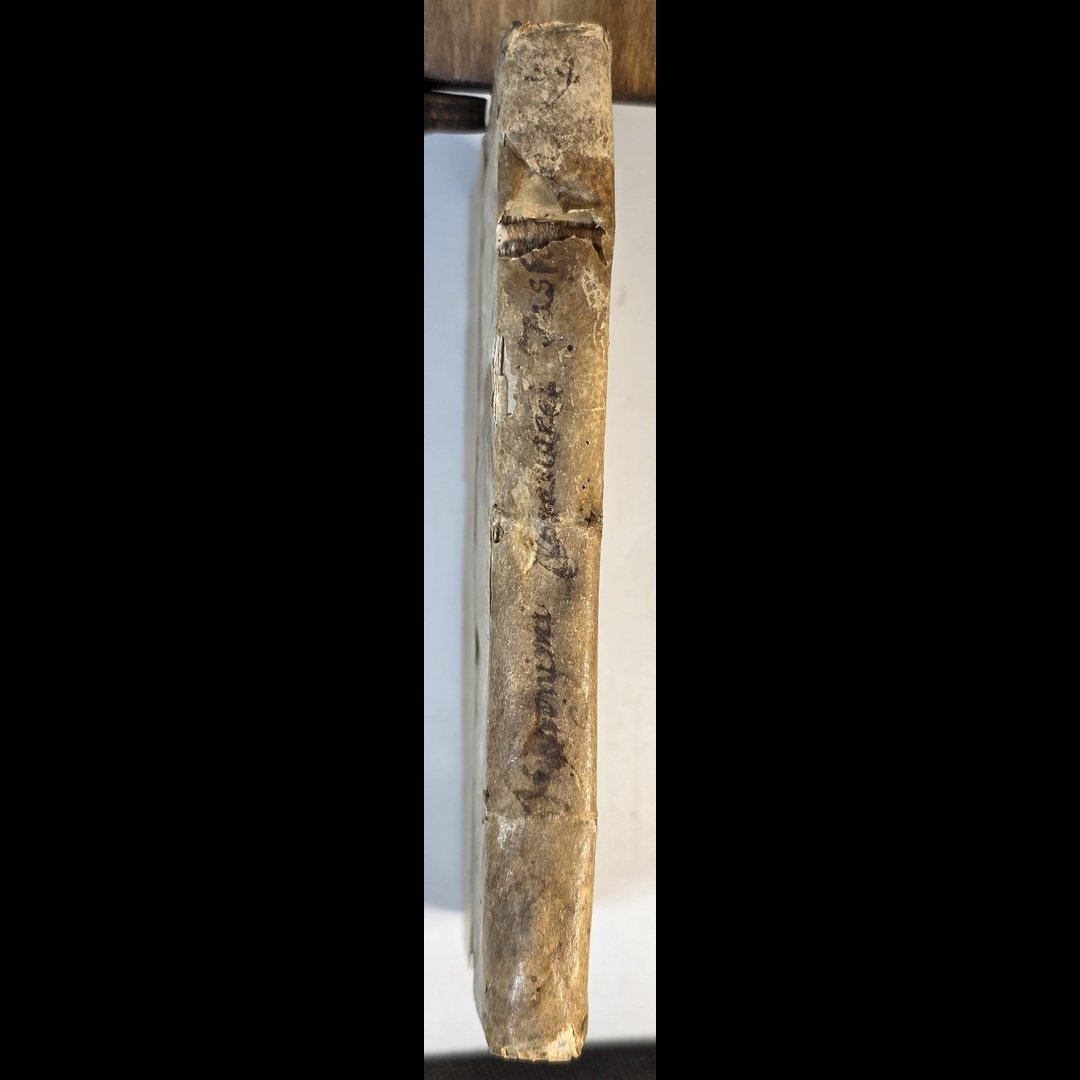 Image 17 of 19
Image 17 of 19

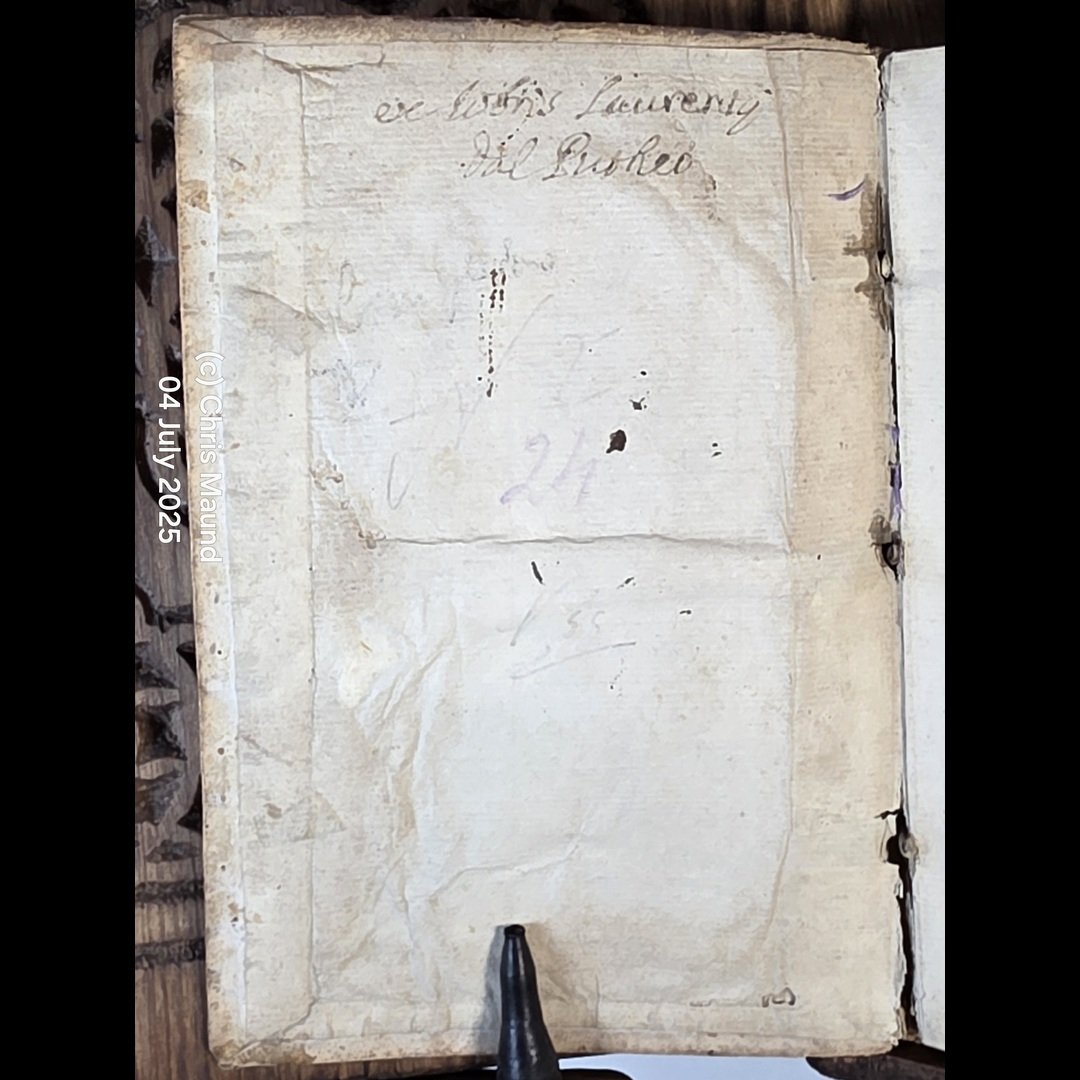 Image 18 of 19
Image 18 of 19

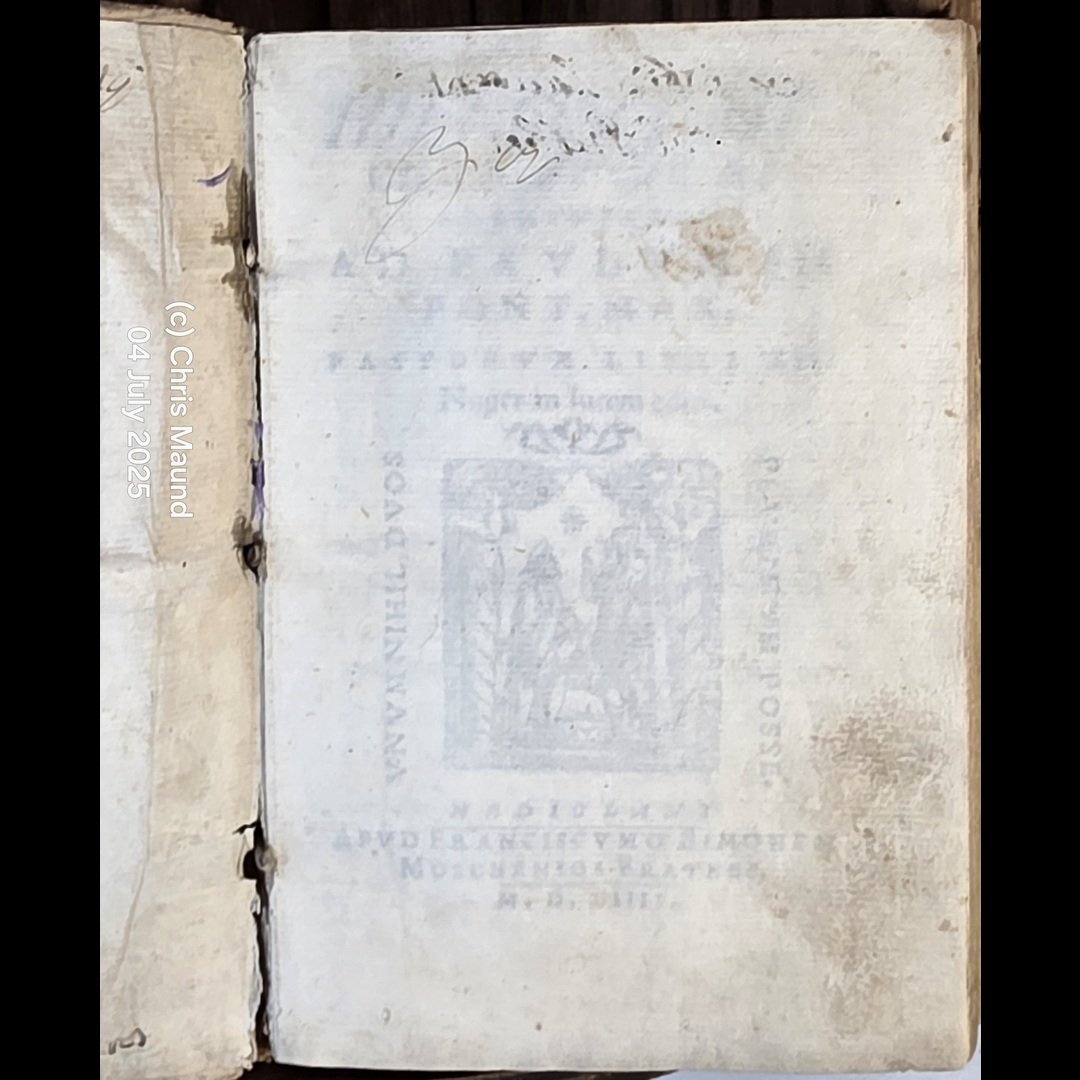 Image 19 of 19
Image 19 of 19




















1554 HIERONYMI CLARAVACAEI CREMONENSIS. AD PAULUM III PONT. MAX. FASTORUM LIBRI XII NUPER IN LUCEM EDITI By Gerolamo Chiaravacci Very Good
1554 1st Edition ,
HIERONYMI CLARAVACAEI CREMONENSIS. AD PAULUM III PONT. MAX. FASTORUM LIBRI XII NUPER IN LUCEM EDITI
By Gerolamo Chiaravacci
He was born in Pizzighettone (Cremona) towards the end of the 15th century. We do not know the precise date of his birth. Assuming that Arisi, mentioning him in his Cremona literata (II , p. 91) under the year 1530, refers to the moment of his flourishing, we can think that he was born between 1490 and 1495. In general, the best source for his life is C. himself in Fastorum libri XII .
Illustrated By:
Format: Vellum,
Language: Latin
Dust Jacket: No Jacket, Dust Jacket Condition: No Jacket
Published By: Apud Franciscum Simonem Moschenios Fratres, Mediolani, Italy
Crown octavo (8vo 5+3⁄8 × 8 137 × 203),Pages 266
ISBN:
FIRST EDITION OF THE POEM THAT FOLLOWS THE MODEL OF OVIDIAN FASTI
First and only edition of this curious little poem divided into the twelve months of the year according to the model of Ovidian fasti. Each month is introduced by an etymological note and an invocation to inspiring characters, both pagan and Christian. The work is also studded with numerous references to historical, biblical and legendary events, as well as philosophical digressions.
Posthumous original edition, first and only, of this poem inspired by Ovidian fasti, a work by this author originally from Pizzighettone. Studying between Lodi and Cremona, he became a good connoisseur of Latin and Greek literature as well as Christian literature. This posthumous edition seems to have been edited by Giangiacomo Gabiani, a teacher from Lodi who dedicated the poem to Pope Paul III. Following the scheme of Ovidian fasti, the work is divided into twelve months. The etymology and history of each month are given with an invocation of pagan and Christian characters, events from the old and new testament, descriptions of historical figures and many cosmological references. There are also many references to historical events such as the wars between the Duchy of Milan and the Venetian Republic which also involved Pizzighettone.
The poem is preceded by a letter from C.'s nephew, Omobono, to A. Farnese, Cardinal of S. Lorenzo in Damaso, nephew of Paul III, (12 June 1554). The dedication of the Fasti is by Giangiacomo Gabiani, professor at the school of Lodi, and dated in Lodi, 21 March 1549, is addressed to the same pope "as we found the work, dedicated to you, the Patron of scholars".
In the preface Gabiani also mentions Elegiarum tres [libros] ac Epigrammatum unum, indicated to him with the Fasti by Omobono, whose ruin and oblivion he wanted to prevent, also because of their Christian content. However, only the Fasti were published, while the other works, not printed, are irretrievably lost. Draud's statement (p. 1146), which on the basis of this preface admitted the existence of the elegies and epigrams in print, is therefore incorrect. Perhaps their publication was prevented precisely by the poor state of conservation, or by economic reasons. The Fasti were presented as unfinished, probably lacking the definitive stylistic revision; but Gabiani, who was responsible for the recognition of the work, states that he behaved like Vario and Tucca with respect to Virgil's Aeneid. Omobono instead took care of the index and the memorabilia alongside the text.
Following Ovid's example, C. divided the material according to the twelve months of the year. Each book presents a fixed scheme, etymology and history of the month at the beginning, brief recapitulation at the end. Furthermore, C. prefaces each of the twelve books with brief invocations or protases, in which he asks for the inspiration or blessing of a biblical character (I, Moses) or pagan character (III, Pallas) or of a muse (XI, Urania ). He to write a kind of sacred chronicle where the most "dramatic" episodes of the Old and New Testaments would have the greatest prominence, and at the same time a kind of martyrology coordinated with the intended calendar.
Alongside the edifying material we find moral and philosophical digressions and a not very orderly series of historical and legendary facts recalled from ancient literatures. In broad terms one can also perceive in the Fasti a cosmological design, which goes from the creation of the world to the greatest exponents of Latin patristics to the theological-philosophical debate on the Immaculate Conception. The author also does not hide his admiration for the great figures of legislators, philosophers, leaders, showing in this his scholastic education.
SKU: BTETM0002461
Approximate Package Dimensions H: 12.5, L: 30, W: 25 (Units: cm), W: 2Kg
1554 1st Edition ,
HIERONYMI CLARAVACAEI CREMONENSIS. AD PAULUM III PONT. MAX. FASTORUM LIBRI XII NUPER IN LUCEM EDITI
By Gerolamo Chiaravacci
He was born in Pizzighettone (Cremona) towards the end of the 15th century. We do not know the precise date of his birth. Assuming that Arisi, mentioning him in his Cremona literata (II , p. 91) under the year 1530, refers to the moment of his flourishing, we can think that he was born between 1490 and 1495. In general, the best source for his life is C. himself in Fastorum libri XII .
Illustrated By:
Format: Vellum,
Language: Latin
Dust Jacket: No Jacket, Dust Jacket Condition: No Jacket
Published By: Apud Franciscum Simonem Moschenios Fratres, Mediolani, Italy
Crown octavo (8vo 5+3⁄8 × 8 137 × 203),Pages 266
ISBN:
FIRST EDITION OF THE POEM THAT FOLLOWS THE MODEL OF OVIDIAN FASTI
First and only edition of this curious little poem divided into the twelve months of the year according to the model of Ovidian fasti. Each month is introduced by an etymological note and an invocation to inspiring characters, both pagan and Christian. The work is also studded with numerous references to historical, biblical and legendary events, as well as philosophical digressions.
Posthumous original edition, first and only, of this poem inspired by Ovidian fasti, a work by this author originally from Pizzighettone. Studying between Lodi and Cremona, he became a good connoisseur of Latin and Greek literature as well as Christian literature. This posthumous edition seems to have been edited by Giangiacomo Gabiani, a teacher from Lodi who dedicated the poem to Pope Paul III. Following the scheme of Ovidian fasti, the work is divided into twelve months. The etymology and history of each month are given with an invocation of pagan and Christian characters, events from the old and new testament, descriptions of historical figures and many cosmological references. There are also many references to historical events such as the wars between the Duchy of Milan and the Venetian Republic which also involved Pizzighettone.
The poem is preceded by a letter from C.'s nephew, Omobono, to A. Farnese, Cardinal of S. Lorenzo in Damaso, nephew of Paul III, (12 June 1554). The dedication of the Fasti is by Giangiacomo Gabiani, professor at the school of Lodi, and dated in Lodi, 21 March 1549, is addressed to the same pope "as we found the work, dedicated to you, the Patron of scholars".
In the preface Gabiani also mentions Elegiarum tres [libros] ac Epigrammatum unum, indicated to him with the Fasti by Omobono, whose ruin and oblivion he wanted to prevent, also because of their Christian content. However, only the Fasti were published, while the other works, not printed, are irretrievably lost. Draud's statement (p. 1146), which on the basis of this preface admitted the existence of the elegies and epigrams in print, is therefore incorrect. Perhaps their publication was prevented precisely by the poor state of conservation, or by economic reasons. The Fasti were presented as unfinished, probably lacking the definitive stylistic revision; but Gabiani, who was responsible for the recognition of the work, states that he behaved like Vario and Tucca with respect to Virgil's Aeneid. Omobono instead took care of the index and the memorabilia alongside the text.
Following Ovid's example, C. divided the material according to the twelve months of the year. Each book presents a fixed scheme, etymology and history of the month at the beginning, brief recapitulation at the end. Furthermore, C. prefaces each of the twelve books with brief invocations or protases, in which he asks for the inspiration or blessing of a biblical character (I, Moses) or pagan character (III, Pallas) or of a muse (XI, Urania ). He to write a kind of sacred chronicle where the most "dramatic" episodes of the Old and New Testaments would have the greatest prominence, and at the same time a kind of martyrology coordinated with the intended calendar.
Alongside the edifying material we find moral and philosophical digressions and a not very orderly series of historical and legendary facts recalled from ancient literatures. In broad terms one can also perceive in the Fasti a cosmological design, which goes from the creation of the world to the greatest exponents of Latin patristics to the theological-philosophical debate on the Immaculate Conception. The author also does not hide his admiration for the great figures of legislators, philosophers, leaders, showing in this his scholastic education.
SKU: BTETM0002461
Approximate Package Dimensions H: 12.5, L: 30, W: 25 (Units: cm), W: 2Kg
Very Good - Contemporary parchment binding. Printer's mark on the title page, woodcut initials (slight browning and foxing, wormhole in the lower corner of the last 4 leaves). Handwritten title on the spine and lower edges (defects and losses restored on the back cover). Good state of preservation of the work. The internal pages do not show particular signs of wear or stains. Beautiful copy, complete, clean and tidy. pp. (2); 6nn. 242; 14nn. (2) Please see photos as part of condition report









































































































